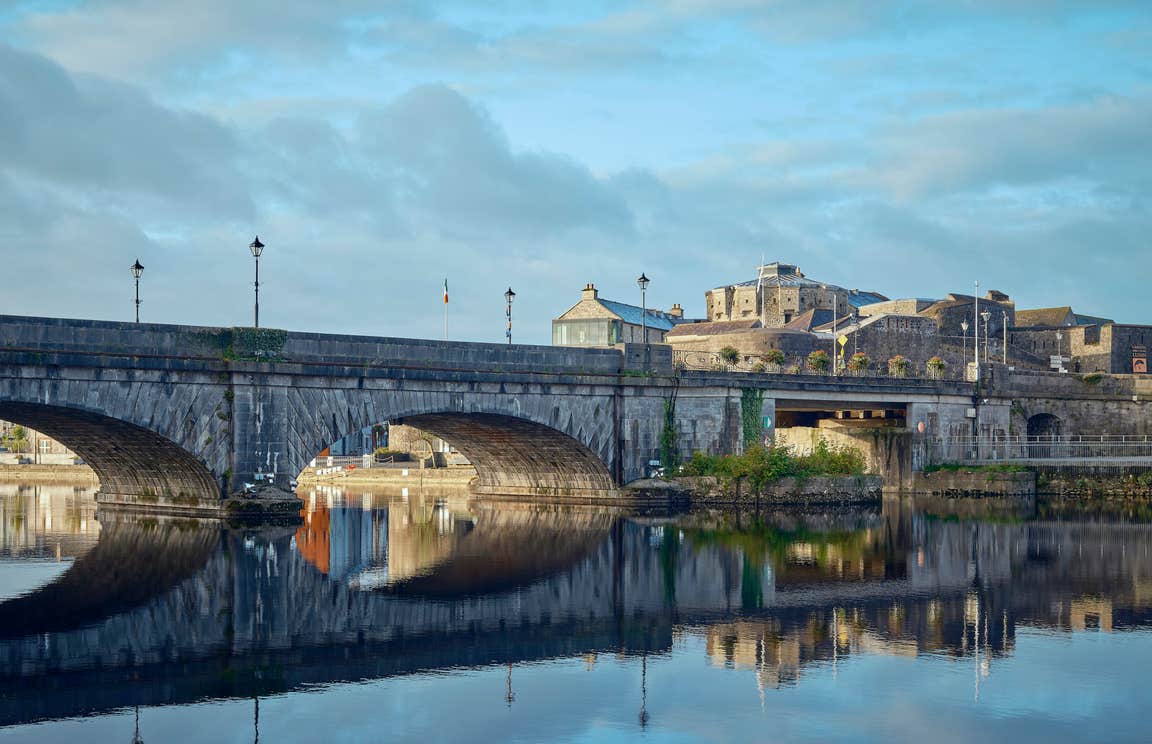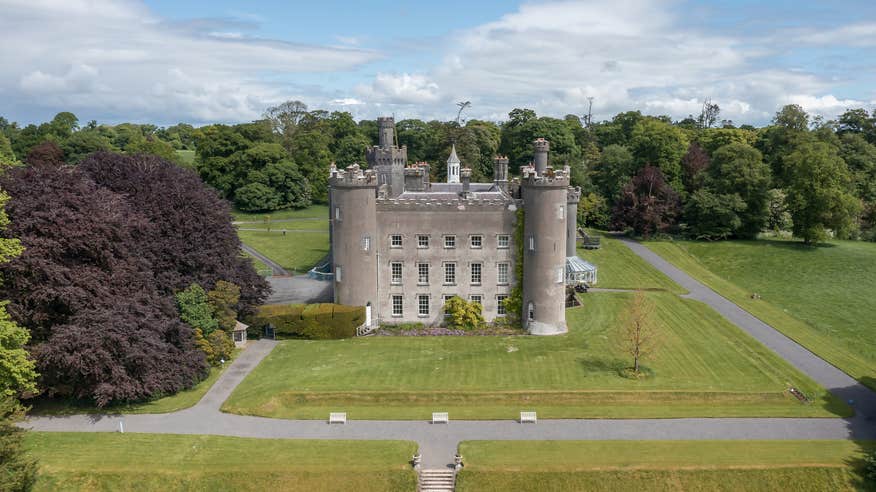Visit Athlone, the heart of Ireland
Athlone town
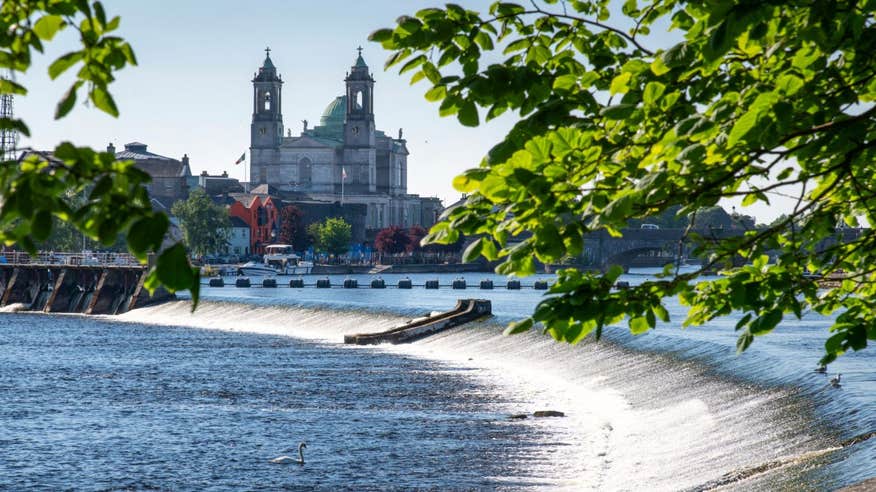
The Midlands' largest town is a historic treasure that can easily take a whole day to explore. Athlone grew up around its mighty castle, which still dominates the centre from its location along the River Shannon. The 12th-century fortification has seen plenty of history, and its story is brilliantly told in interactive, multimedia detail: you can relive the 1691 Siege of Athlone in a 360º cinematic movie, complete with the deafening sound of cannon fire.

If you're in the mood for some art after all that history, the Luan Gallery across the street has rotating exhibitions of high-quality, contemporary work - plus there's great views from the floor-to-ceiling windows.
The Midland bogs are the source of inspiration for artist Eibhlín Ní Chongháile of Celtic Roots Studio. She specialises in sculpting bogwood into dramatic figures including birds and human forms as well as shapes representing nature, the sea and Celtic design. Some of her pieces have been gifted to heads of state around the world; you can visit her studio and commission one for yourself.
Breweries & distilleries
Once a bustling hub of distilleries, breweries and malt houses, Athlone still maintains a strong connection to its home brewed past. In the heart of town is Dead Centre Brewing Company, a craft brewery that runs tours during weekends, where you can enjoy local brews and made-to-order beer on outdoor decking over the river. And no visit to Athlone would be complete without a visit to Sean's Bar on Main St, officially the oldest public house in Ireland, serving thirsty customers for over 1100 years.

Cruising the Shannon
Athlone is also a popular starting point for cruises on the Shannon. Viking Tours Ireland’s replica longboat takes you up the river to Lough Ree, telling tales of Viking raids and battles along the way. Time travel is also a feature of cruises aboard the Hidden Heartlands Tour, along with expert takes on local flora and fauna as you meander up the river to Lough Ree. Some cruises go as far as the monastic ruins at Clonmacnoise.

The Old Rail Trail Greenway
A section of the old Midlands Great Western Railway line has been converted into the Old Rail Trail Greenway, which runs for 43km from the middle of Athlone to Mullingar. It's a mostly flat trail through pretty countryside, going under stone arched bridges and past restored station houses. If you didn't bring your own bike, you can rent one from Buckley Cycles in Athlone.
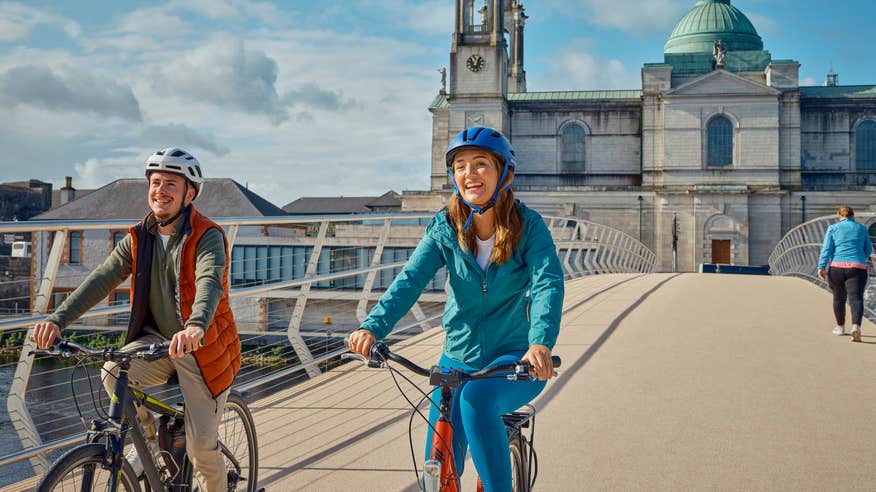
Where to eat and stay in Athlone
For healthy diners, Bastion Foods has an enticing breakfast menu with dishes like poached eggs with peanut Rayu and avocado toast. The riverside Thyme Restaurant serves a modern Irish menu with the best of local produce. On Church St, the Fatted Calf is a New York-style bistro that also puts the focus on locally sourced beef, while over on Strand Street there's more of a Hollywood-in-the-1920s theme at Hatters' Lane Bistro, which does classic brasserie-style meat and seafood dishes.
Just north of town along the shores of Killinure Lough, the Wineport Lodge is a modern-rustic lodge with top class amenities, including a gorgeous spa and a superb restaurant. A little further on, overlooking Lough Ree, the Glasson Lakehouse is stylish resort with a heated outdoor pool and an 18-hole championship golf course.
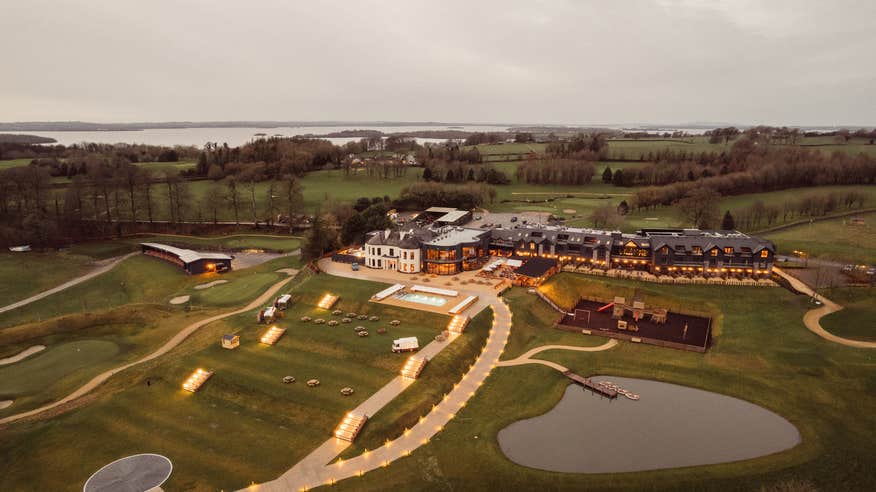
Whiskey, mischief and greenways
Kilbeggan Distillery
The smallish village of Kilbeggan is synonymous with Kilbeggan Distillery, the oldest distillery of its type in the world, with a history dating back to 1757. The popular tours cover how Irish whiskey was made in decades past, touching on traditional methods for mashing in oak mash tuns and fermenting in Oregon pine vats.
Although the distillery has since embraced more modern and mechanised methods, you can still see the original waterwheel that once powered the whole operation. The tour concludes with a tasting and a stop in the Whiskey Bar, which has the full range of whiskies on display.

Belvedere House & Gardens
About 19km north of Kilbeggan, by the western shores of Lough Ennell, is Belvedere House & Gardens, a Georgian country house in a 65-hectare estate. The house itself is an architectural marvel, its semicircular bow ends and windows, its wonderful stucco work on the rococo ceilings and its exquisite dining room reason enough to visit, but it's the story of the Belvedere's owner that will stick in the mind.
Robert Rochfort, the Earl of Belvedere, imprisoned his own wife in a nearby house because he suspected she was having an affair with his brother Arthur. She remained alone under house arrest for 31 years, going slowly mad; meanwhile, Robert was feuding with his other brother, George, who had built his own mansion by the shores of the lake. Robert was so irritated by it that he built a huge folly to block it from view - that folly was later called the 'Jealous Wall.'
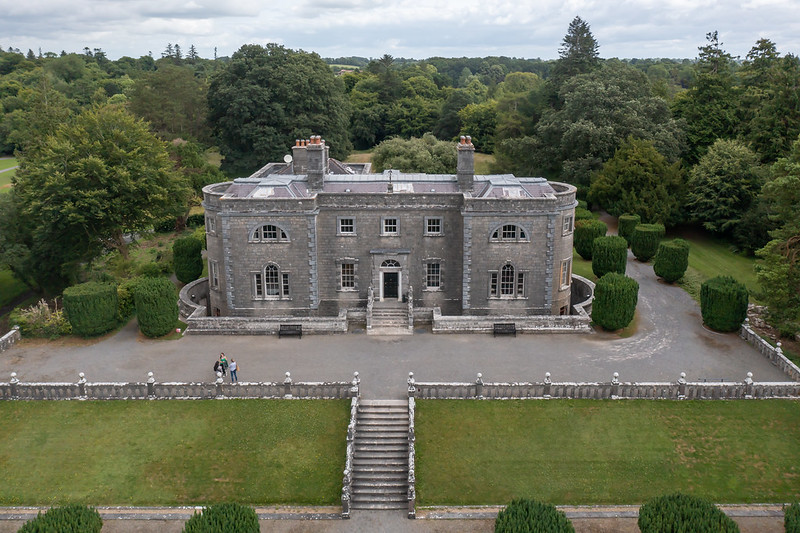
The gardens, with their Victorian glasshouse, walled garden and lakeshore setting, make for gorgeous walks.
There are also some wonderful walks around Lough Ennell, which is a mix of woodland and country fields that make for great picnic stops. Alternatively, you can head to Mullingar and connect with the Royal Canal Greenway, a cycle and walking route that can take you all the way to Dublin and Longford. Enjoy the unspoiled countryside and late-eighteenth century industrial archaeology along the way – if you just want to walk a small section on your short break, jumping onto the trail at Mullingar is your best bet.
Where to eat and sleep in Mullingar
A healthy option with strong Asian influences, Wholesome Kitchen on Dominick St does plant-based burgers and Thai-style street food dishes like rice noodles in a tamarind sauce, but you can also get hearty classics like salmon and potatoes and chicken and mushroom pasta. Over on Austin Friar Street, Pasta Bella is a family-run Italian restaurant where you can get pizzas and pastas in a cosy, relaxing atmosphere.
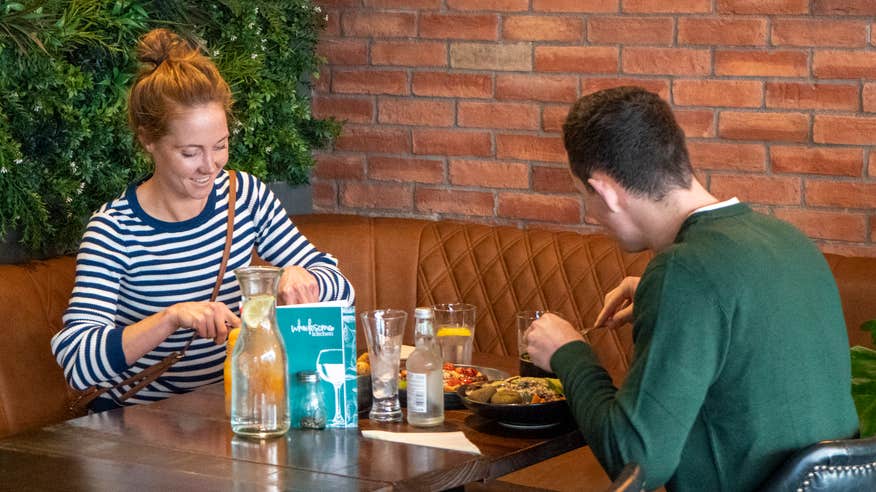
James Joyce was once a regular guest of the Greville Arms Hotel in Mullingar, which dates from 1884 but which replaced a coaching inn that originally opened in 1750.
The rich history of central Ireland
Fore Valley
One of Ireland's great undiscovered sights is the Fore Valley, 26km north of Mullingar on the northern shore of Lough Lene. Here, amid the emerald-green landscape are a collection of ruins associated with Fore Abbey, a monastic settlement originally established by St Fechin in AD 630. There's a 3km looped trail around the valley that brings you past all of the remains, including St Fechin's Church, an anchorite cell dating from the 15th century and St Fechin's Well, which according to legend is filled with water that will not boil.

This is one of the 'seven wonders' associated with Fore: the others are the tree that will not burn, the mill without a race, the water that flows uphill, the tree with three branches, the anchorite in a stone and the lintel that is raised by St Fechin's prayers. Cynics should be careful, though, as any effort to check if the wonders are real will result in doom for the whole family.
Tullynally Castle
From Fore, you’re only a 15-minute drive to Tullynally Castle. The imposing Gothic Revival manor house is still the seat of the Pakenham family; during the summer months there are tours of the house which take you through the Great Hall, library, dining room and drawing room. There are also tours of the early Victorian kitchens and laundries, where you can get a sense of life ‘below stairs’.
Leave enough time for the beautifully restored gardens, which include walled gardens and romantic woodland walks. The star of the show are the pretty summerhouses, each of which frames a different view amongst the unusual trees and shrubs collected by the owners. Even if the weather isn’t playing ball, ducking into the tearooms and sitting by the cosy wood-burning stove is the perfect place to watch the world go by.
Hill of Uisneach
The centre of Ireland during Neolithic times was the Hill of Uisneach, 21km southwest of Mullingar, just off the R390. The hill is believed to be the final resting place of the Earth goddess Ériu and the sun god Lugh, as well as the gate to a mythical fifth province, Mide. The hill's sacred role made it an important centre for early Christianity, while in more recent times it was a popular spot for political rallies, with figures including Daniel O'Connell and Eamon DeValera both addressing crowds from atop the hill.
The hill is 596ft above sea level and offers commanding views over Ireland's central plain - on a clear day you’ll be able to see 20 counties on the horizon. Today, the actual centre of Ireland is 46km to the west (near the village of Castletown Geoghegan), and the difference is accounted for by rising sea levels over the last 3000 years. The 2-sq-km site is mostly privately owned, so the only way to visit is by an informative two-hour tour.
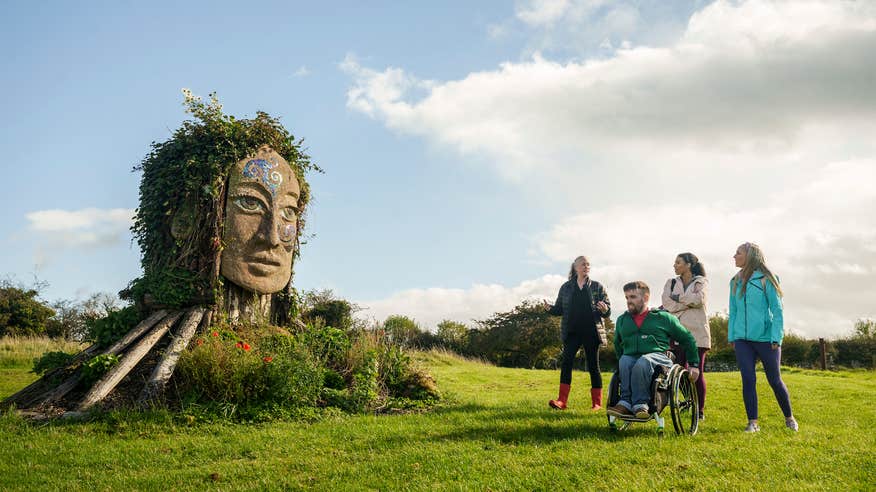
Where to eat and sleep in the Fore Valley
If you're visiting the Fore Valley, the Fore Abbey Coffee Shop at the car park does decent snacks and also provides trail maps to the sights in the valley.
If you are looking to stay overnight in the area, the Hounslow House in Castlepollard is a cosy spot overlooking Fore Abbey.
If you want to explore Athlone in a really eco-friendly way, check out our detailed guide on how to visit Athlone and the Old Rail Trail without a car.
